Part 2 Sail Dynamics: Automatic Rigs
Part 2 Headsail Experiments
A couple of years ago I designed and built a test rig so that the behaviour of sails under load might be studied. The rig heels the same as an average IOM under wind load and so it is possible to look at the sail shape as a function of the heel angle.
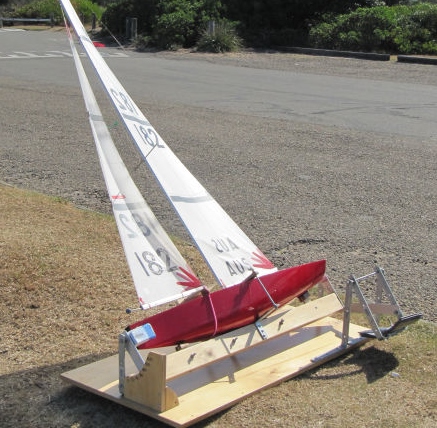 |
 |
The rig is shown in the Figure 1 and cameras mounted on the rig provide photos like Figure 2 that, using some free software from UK Sails, can be analysed to show the camber and twist at various heights up the sail. One such study looked at the behaviour of a 2003 IOM A rig headsail.
The mast was pre-bent to the then usual 40mm deflection as in the Sails Etc drawings, and the material was the lighter grade film. The swivel was 75mm behind the headsail luff. The bulk of the readings were taken with a backstay tension of about 20N, which gave an unloaded camber of 7.5% at the top batten when measured inside with the boat on its side.
Some readings were taken for other backstay tensions, though the wind became quite gusty and the rig hardly stayed at one angle of heel for more than a second or two, making measurement difficult and the data showed a large scatter as a result. It became clear that this was because the rig has less inertia and damping then an actual boat sailing, because boats sailing were not changing heel angle anywhere near as rapidly, though they must have been experiencing similar wind variations. This just emphasised how much micro structure is in the wind at model yacht level.
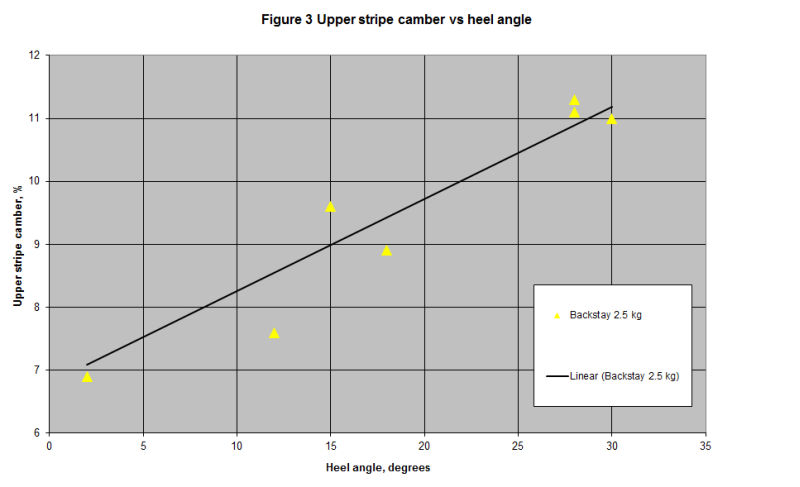 |
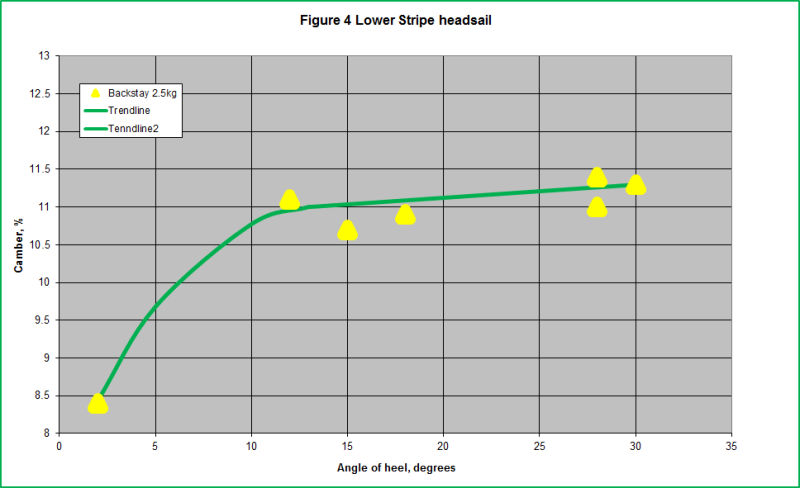 |
The resulting change of camber with heel angle is shown in Figure 3 for the top stripe and Figure 4 for the centre stripe. The top stripe result shows a progressive increase in camber with increasing heel angle, exactly the opposite of what is needed. The angle of attack did not change, indicating that the leech and luff fell off athwartships at about the same rate.
The centre stripe (Figure 4) shows a similar result to that for the mainsail in Part 1 in that after a change at low heel angles, the camber stayed roughly the same as the heel angle increased. The twist did not change substantially over the whole range.
This is surprising result because it would be expected that the sag in the headsail would have to increase with increasing wind load. What actually seemed to happen was that the extra load was taken by the cloth near the forestay with the result that the camber moved forward with a tight curvature near the forestay. At least these results are not as bad as those described by Lester Gilbert in the wind tunnel tests.
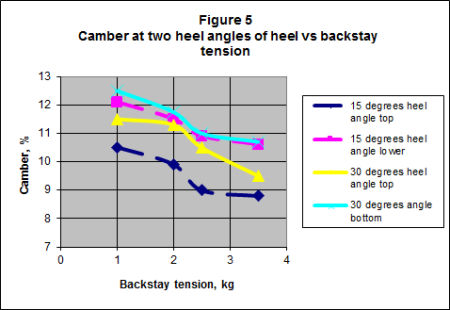 An attempt was made also to look at the camber for different backstay tensions at 15 degrees and 30 degrees angle of heel for both the top batten and the mid height of the headsail. The results are shown in Figure 5. It is interesting that the change in camber with backstay tension seems to be similar for the different heel angles. It would seem more likely that the difference would be greater as the boat heels more. The answer seems to lie in the tension taken by the cloth near the forestay.
An attempt was made also to look at the camber for different backstay tensions at 15 degrees and 30 degrees angle of heel for both the top batten and the mid height of the headsail. The results are shown in Figure 5. It is interesting that the change in camber with backstay tension seems to be similar for the different heel angles. It would seem more likely that the difference would be greater as the boat heels more. The answer seems to lie in the tension taken by the cloth near the forestay.
There is a trend too for less backstay tension at setup with attendant less forestay tension. Figure 5 suggests that with a 1kg backstay tension sails need to be cut about 3% flatter at least to come out the same at those for higher backstay tensions.
Col Thorne May 2007
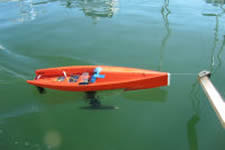
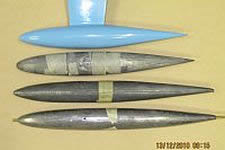
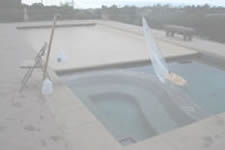
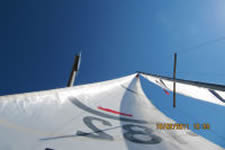
 Rigs & Sails
Rigs & Sails